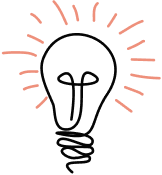David Whited, who leads Highland’s Research & Strategy practice, was on a video call last week with a VP from a Fortune 500 financial services firm.
His team has been providing some exploratory research right in the heart of the firm’s strategy for the last several months, and the conversation had turned to what needed to happen next. Everyone agreed the work had been impactful and exemplary, and everyone agreed that a new focused round of research needed to happen based on some surprising discoveries in our work together.
“I want you to know,” said this VP, “that we may not use you for this next round of work.”
David—as he says in his own words—got “flooded”. His emotional response of surprise, fear, and a bit of anger temporarily overwhelmed his ability to this clearly and creatively. He muddled his way through the next few minutes and the call ended.
If you serve clients directly or work in sales or business development—and you’re not in the small sliver of businesses positively impacted by the pandemic—you’ve had this conversation in the last month. What works has stopped working.
The majority of our clients are people making long-term, strategic investments in digital products. The budgets for much of that kind of work has been paused or reallocated right now. There are bigger, more urgent problems companies are looking to solve. Our pipeline froze solid from mid-March to mid-April. No one wants what we’re offering (right now).
You may be tempted, like us, to either hustle harder or throw in the towel. But pure hustle lacks discipline, and throwing in the towel lacks urgency. There is a better way. Our years of working to launch digital products have given us a lot of experience working in high uncertainty circumstances. The right response to high uncertainty is to shift as much as possible into learning with discipline and speed.
So here’s a window into what the Highland team is up to, in the hope it may inspire your own shift.
1. Learn by learning
Let’s reboot our assumption that we know what our clients and customers need and start asking them what their world is like right now. For that, we need to do some research.
Research sounds really hard and time-consuming because we think of statistically significant research done by universities or large research organizations. We don’t need statistically significant research. We need more information. Here are the two most important things to keep in mind:
- First, plan to have video conversations with around 10 people who are your clients or ideal prospects. This will get you about 80% of the information you’re seeking about your clients and can be done in 2-3 days.
- Second, ask questions to understand their experience and priorities right now, including what would be helpful and important to them from their point of view. Work with an open mind, even if that means what you typically offer is way down the priority list. Your job here is not to change their priorities but to understand them.
For the Highland team, this has meant talking to leaders of design, digital, and innovation over the last few weeks. We’ve found what we learned in these conversations to be so interesting to us that we’ve just launched a quantitative survey to understand how a broader set of these leaders and experiencing and responding to the economic downturn and the new realities of fully remote teams.
We're turning this survey into a report on the State of Digital Innovation During COVID-19.
By taking this next step, we can not only learn about the changing priorities of our clients and ideal prospects, but also produce original research that is valuable to them and can be shared back. We’re forming new relationships with folks we haven’t interacted with before.
2. Learn by experimenting.
Run experiments instead of initiatives.
Initiatives are when we spend days or weeks thinking up a new offer, perfecting it in a document, and making a big plan to roll it out.
Experiments take hours or days. Take your new idea, write it down on a page or less, and pitch it to 3-5 people. By thinking in experiments we acknowledge we might be wrong, and by accelerating the feedback loop we make it easier on ourselves and on our organizations if the idea doesn’t work.
In the past week, the Highland team has been running three experiments:
- A “virtually embedded” model for our research and design team members, offered to organizations that are running really hot right now and need access to talent.
- A packaged 5-day customer research offer, which is an extension of our “learning by learning” approach for ourselves.
- A Highland University concept that packages all our methods, tools, and templates into a repository for in-house innovation and Jobs-To-Be-Done focused research teams.
The first one didn’t work. (Yet, I think!) The second one has shown some early success. And the jury is still out on the third, which is a bigger concept and a longer term experiment. But the idea here is to not try to crack the challenge with a single killer idea, but to make real, small offers with discipline and speed and learn from what really works and what doesn’t.
3. Learn by giving
High uncertainty and high anxiety circumstances can get us mentally and emotionally cycling on our own set of challenges. But we’re all part of something bigger, and all of our organizations can give our skills and resources away as a piece of how we’re responding to this moment.



